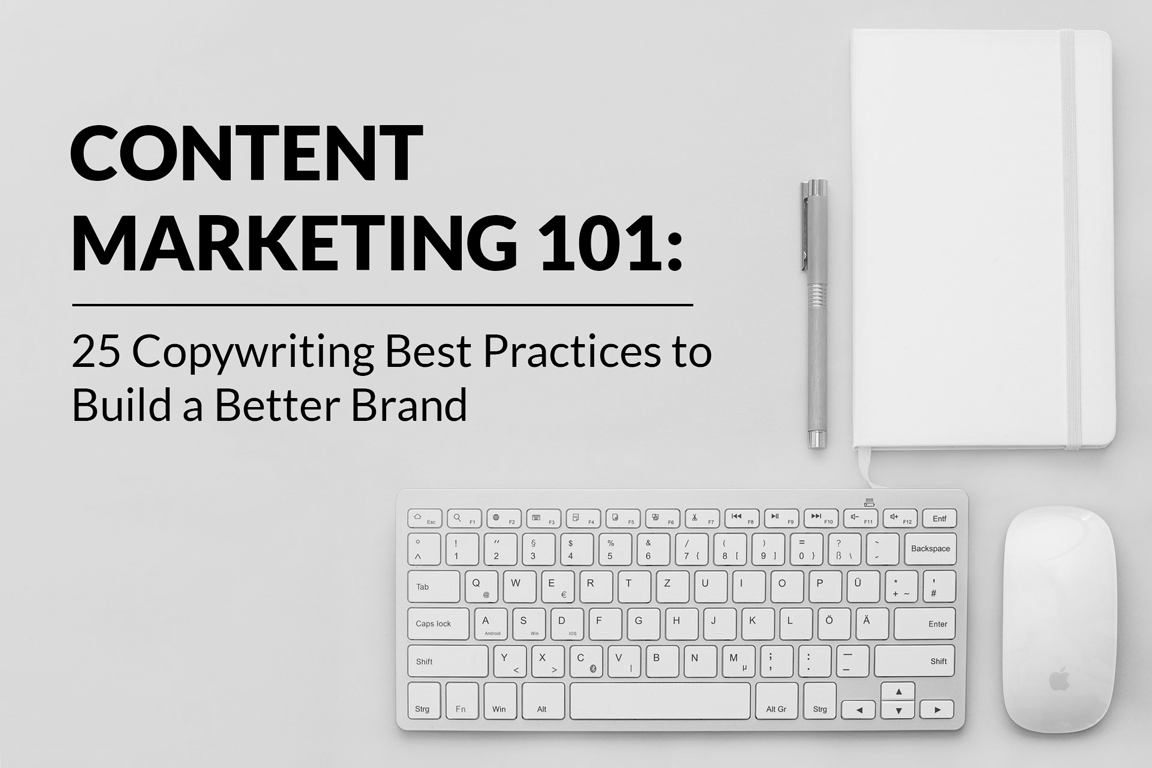
What Is Content Marketing?
Content marketing deals with the production of materials throughout the digital space, while assisting a specific audience who rewards you with their business. A content writer produces articles, how-to’s, opinion blogs, sales brochures, banner advertisements, video scripts and so much more. Content writing supports your SEO infrastructure by enlarging your site and engrossing your audience with relevant and branded material.
Content writing refines a company's utility and message. By building SEO articles, you’ll gain awareness by offering not a product, but information. With interesting videos, you’ll engage your audience. The point of content marketing is to drive new people toward topics surrounding your products and/or services in an entertaining, educational way.
1. Avoid Long, Cluttered Sentences
Web sales copy needs to be short.
Not only is it harder to read long sentences on a screen, people won’t give a rambling writer their attention. We can, of course, bring up the oft-referenced Apple writing team, which is famous for their short sentences. And starting sentences with the word “and.”
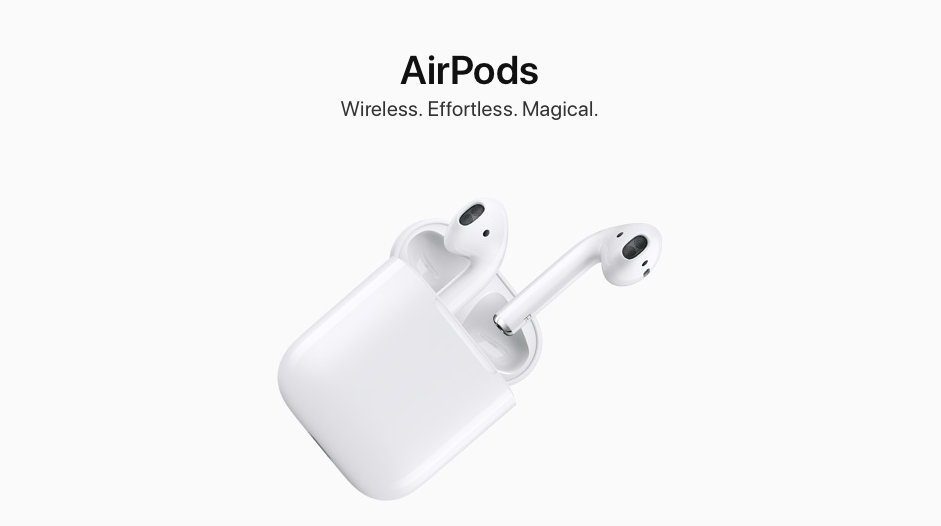
But when it comes to writing web copy, there’s really no other better rule to follow than the old adage of the K.I.S.S. method of communication.
Want to learn more about writing great web copy? Read our post: The Ultimate Guide to SEO Copywriting
2. “Keep It Simple, Stupid”
This is a famous saying in the marketing industry and one that never loses its validity. Keeping your sentences short, verbiage uncomplicated and messaging straightforward will assert more influence over the consumer. For example, immediately display product benefits. The consumer is already considering purchasing, they just need a persuasive ‘push’ to make a purchase. Give them that push through simple, persuasive copy.
3. Be a Thief
“Good artists copy. Great artists steal.” – Quote by Pablo Picasso
What Pablo means here is that no one should ever copy another person’s work, brush stroke for brush stroke, word for word. Instead, they should apply these ideas, concepts and strategies to their own work in order to push the boundaries of their craft.
Other Copywriting Brainstorm Quotes
"The only art I'll ever study is stuff that I can steal from"
— David Bowie
"We have always. been shameless about stealing great ideas."
— Steve Jobs
"Good artists copy. Great artists steal."
— Pablo Picasso ... Banksy
With digital content, the same idea applies. In the Internet era, it’s very easy to piece together an article, grabbing ideas from here and there. What’s more difficult (and will be a challenge for the future of the online marketing industry) is writing unique content. Too many content marketers are focused on quantity of production. Everyone needs to start focusing on quality of production. For the consumer’s sake, for humanity’s sake – for goodness sakes – don’t recycle unhelpful content. You’re not helping anyone. Especially yourself.
This is also a great way to overcome creative struggles – find a copywriter you admire and try to mimic their style. If you’re interested in finding out more ways to improve your content strategies, check out our post: Tips to Cure Writer’s Block.
4. Avoid Cliches, Filler
Which brings us to our next point: avoid overused phrases, buzzwords, cliches and filler in general. We know that the top results for page one results on Google SERPs averages 1,890 words, and that the best blog length for 2018 is more than 2,000 words. But, that doesn’t mean you should add words just for the sake of ranking well. If anything, poorly-produced, rambling content will garner negative pagerank by increasing bounce rate and decreasing time on page.
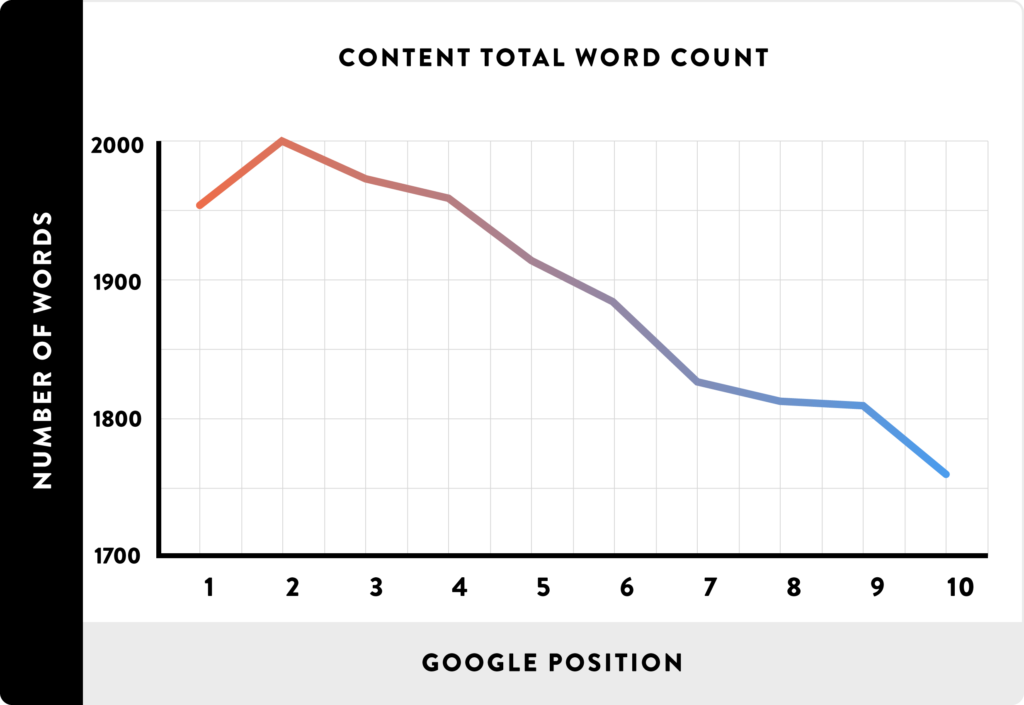
5. Write for People AND Search Engines
With digital copywriting, you need to have the intelligence to consider all parties reading content on your website. Writing for you consumer should be your number one priority, but remember that search engines are often what’s going to drive that said consumer to the page in the first place. Keywords and header tags will play a huge role in achieving the attention of Google.
Don’t forget about SEO! Use some of the following tools to get your SEO strategy in line with your content:
6. Knowing SEO Best Practices
With all content marketing, there are SEO marketing best practices to keep in mind as you conduct your strategy.
The following image represents how page titles and meta descriptions show up in search engines:

THE PAGE TITLE IS DENOTED IN PURPLE, WHILE THE META DESCRIPTION IS THE TEXT UNDERNEATH THE URL.
Page Title
- Page titles are the lead element of a WordPress page, and immediately inform the search engine crawler of what the page is about. They should:
- Be no more than 65 characters.
- Not include duplicate content.
- Contain a relevant keyword.
- Be URL friendly.
- Page titles are coded as:
![]()
Page titles run from h1 – h6 with your most important keywords tagged with h1 – h3.
Meta Description
- Meta descriptions are the snippets that show up in the search engine listing. They are a short description of the page and should:
- Entice the searcher to click on the link.
- Fewer than 160 characters.
- Be unique.
- Avoid keyword stuffing (write for humans, not robots!)
Content
- View your pages on the front end to ensure that your content is:
- Relevant, interesting, and READABLE.
- Grammar-oriented.
- Greater than 300 words.
- Not focused on a keyword that overlaps on another page.
ALT Tags
- ALT tags were invented so the blind could operate the Internet with a screen reader. They describe an image so when you hover over your mouse, the text describes the image. This offers great opportunity to insert more keywords into your content, but don’t abuse it. Your ALT tags should…
- Be on every single image
- Be descriptive
- Be relevant
- Be long-tail rather than short-tail.
Check Internal Links
- Internal links are your best friend when trying to gain search engine relevance. The more links pointing to and from your webpages shows that you’re an influencer and Google will reward you. Each page should…
- Include at least three links.
- Point to other influential pages on your site and externally.
- Have relevant anchor text (keyword inclusion a bonus!) for links.
7. Page Titles & Meta Descriptions
Title elements define the title of a web page. Title tags are often used on SERPs to display preview snippets for a given page. An optimized page title is between 50-70 characters in length and contains one or more relevant keywords as well as the brand name. Example:
Title of Post or Page (with keyword) | Keyword 2 (optional) | Brand Name
- Page titles should be applied consistently across the website. Avoid a high number of duplicate page titles on web pages throughout all sections of your website.
- A number of different formats are applied to the site’s page titles. Various page titles use a line bar ( | ), hyphen ( – ) or comma ( , ) as separators. Applying a consistent format will improve the uniformity of your search results and also improve site navigation.
- Meta descriptions are HTML attributes that provide concise explanations of web page content. Meta descriptions are commonly used on search engine result pages (SERPs) to display preview snippets for a given page.
- An optimized meta description is an engaging description (between 150 and 160 characters) of the web page’s content that includes one or more relevant keywords.
8. Keyword Research: Find Headlines
The art of keyword stuffing has been lost with Google algorithm changes and whatnot. And while, yes you should write your content for humans, you shouldn’t let keyword research fall off the grid. Using Keyword Planner, you can sort and/or filter keyword ideas by competition, search volume and more. Search the keywords you want to rank for within the program’s search box. Sort or filter to find low to medium competitive keywords that have a high number of monthly searches. The keywords relating to your article are perfect for your header tags.
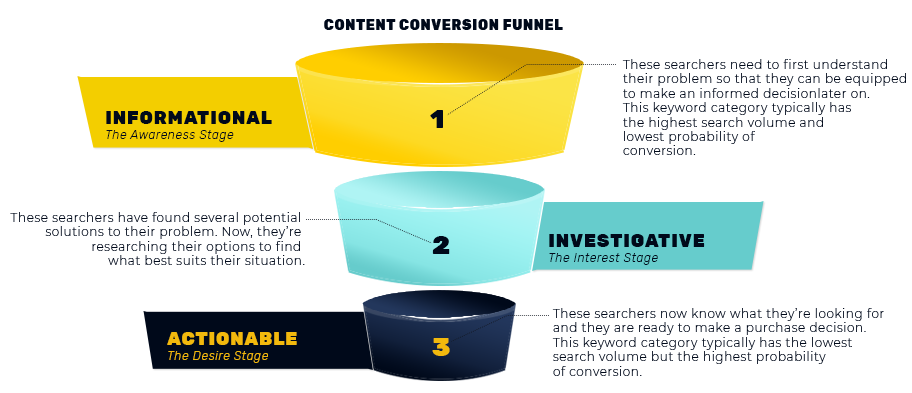
- Writing copy for your homepage is incredibly important as well. The headline will be the first thing a visitor reads when they land on your website – whatever it says will make them connect to or repel from your brand. Ensure your words are compelling.
9. Understand Header Tags
If you know a little about SEO, then you should understand what a basic header is. If not, here's a rundown:
- Header tags, or "h1" tags are, simply put, emphasized text on the page. H1 tags are HTML speak for “Title of the Page”. To present relevant results to searchers, Google determines the subject of the page by crawling your text. They scan for these tags to understand the high-level subject matter. The easier these are for the search crawlers to understand, the more likely you are to rise in results.
- Your h1 is the most important – it’s the title of your page. Include a solid keyword to alert search engines within that tag. There are also h2, h3, h4, etc. tags that will be the sub-headers of your pages. Use these in conjunction with the importance of page content. Again, using keywords within these tags will help you gain traction in search algorithms.
10. Brand Voice + Tone
Find your brand’s voice, make sure it connects with your desired audience and never stray. Use subversions of your voice – your “tones” – among different marketing materials. For example, company announcements on your website might be a cheerful tone; correspondence with clients might be a professional tone.
Brand voice is important because it assigns a personality to your brand. When people connect with your company on a human level, you're promoting healthy consumer interactions.
A common way to use brand voice is to either match it or juxtapose it with your company. For example, an aviation company could provide an inspirational voice, a financial company may consider developing as trustworthy if voice as possible, and an events company could focus on communicating a sense of excitement. For those in more "dry" industries, well, there's even more of an opportunity to sculpt a stand-out voice. Take a look at this guide for more information.
11. Active, Not Passive, Voice
Flashback to 10th grade grammar class! Here’s an example of active vs. passive voice:
- Copywriters love Moz – Active
- Moz is loved by copywriters – Passive
With an active voice, the subject conducts the action within a sentence. With a passive voice, the subject receives the action. The passive style of writing is too wordy, it’s harder to understand and it’s contradictory to concise copywriting. But, really, no one speaks like that — write how you speak. Don’t be afraid to end sentences with prepositions. Most readers on the Internet aren’t professional linguists, and may even appreciate a more casual approach to brand voice and tone.
Another related point: Don’t use uncertain language. Here’s an example of certain vs. uncertain language.
- Our digital content writers can find data with the help of a research tool like Moz. – Uncertain
- Our digital content writers find data with the research tool Moz. – Certain
See? Can your content writers find data, or will they? Little things like this reassures consumer confidence when buying your product. Even if they’re not directly thinking about the difference between can/will, they’re more likely to choose a company that shows commitment, and that’s certainly a way to do so.
12. Use Supporting High-Quality Graphics
Unfortunately for writers, humans are more interested in stimulating visual images and visuals. But don’t throw your typewriter out the window just yet. Especially on social, this luxury website design best practice is important for you to grasp.
On social media, viewers retain 95% of a message when they watch it on video, compared to 10% when reading it in a text. It’s not difficult to understand why people are attracted to visual content – it’s easier to digest and produces an immediate emotional response (either positive or negative). To take advantage, find the platforms your audience participates on and contribute. A good headline in conjunction with a compelling visual will see the best results.
To find good images or video, check out our guide: Web Design: The Best Free Stock Photo Sites on the Internet to Build a Beautiful Website
13. Find Your Platforms
Let’s say you operate a travel discount website, offering up discount tickets to a luxury cruise line. You most likely have a lot of visual content that is great for platforms like Pinterest, Instagram and even Facebook, the more visually-focused social media. It just so happens, a lot of your audience (women) hang out there too. Utilizing this information, the online store should develop a strategy around these three platforms.
On the other hand, if you’re a niche tech company offering management software, you’ll most likely be on platforms like LinkedIn and Twitter. These are the best platforms for reaching professionals interested in the specialty industry. Searching for groups, the CEO of this digital store would be wise to answer customer complaints and provide supplemental content to draw visitors to his site.
Perhaps your audience isn’t on social at all. In that case, it might be smart to find specialists in your industry and reach out to them for some assistance.
14. Get Some Guests
 Guest posting isn’t dead, and will never hurt your digital marketing strategy. Reaching out to industry professionals for a guest blog post is a great way to make some headway in a particular niche industry.
Guest posting isn’t dead, and will never hurt your digital marketing strategy. Reaching out to industry professionals for a guest blog post is a great way to make some headway in a particular niche industry.
If you’re an established business, create an entire marketing plan around a celebrity popular with your audience. Throw a contest such as the National Pork Board did with celebrity chef, Guy Fieri in the “Search for the Next Pork Personality” contest. By submitting a video on National Pork Board’s website, three lucky finalists get to meet Guy and compete for $5,000 dollars in a cook-off. Also, they launched in Des Moines, IA (Iowa provides 28% of America’s pork), so they obviously had done their demographic research.
15. Localize your Work
This is especially important for small business owners. When developing online content, you may be writing articles geared toward a particular region (car engine block heaters=Russia), or you could be selling a product the entire world consumes (coffee=everywhere). While your store is most likely in between those two, there’s most likely an opportunity to gain fans right in your own backyard, no matter where you are.
Localize your writing – insert your targeted city/state into articles and HTML elements like meta descriptions and title tags, or write specifically about the region you sell to. With this, you are giving your Internet business a physical location, boosting trust among the consumer and boosting authority by giving the search engines geographic location to reference in Google Maps, rich snippets and directory listings.
16. A/B Test
The best way to see if your content strategy is working is to conduct A/B tests. A/B tests compare two different versions of any part of a website.
For example, if you want to test two different messages against one another, all you need to do is develop two landing pages, each with its designated content. Split website traffic between the two landing pages and see which one performs better. Examine elements like lower bounce rate, contact form submissions or length of time spent on page in your analytics account. Post whichever one is driving higher-quality traffic.
17. QA All Work
Last but not least, have everyone possible QA every piece of content produced. If you’re fortunate enough to have a marketing team on your side, pass it around to each member for quality assurance. Have them read through every sentence, click every link to ensure high-quality user experience. If you don’t have a team on your side, there are tons of third-party editing companies you can reach out to. TextBroker and WriterAccess are among several content platforms providing unique content services to websites.
18. Content Strategy for Inbound Marketing

When you produce and publish great content, you’re more likely to draw visitors from organic search, link sharing and social media, among other inbound marketing tactics. This lets an audience find you, instead of you seeking out an audience.
A content strategy is important, especially if you have multiple writers on your staff. Having everyone on the same page is imperative in organizing your group. Solid content strategy starts with a strong brainstorm where every idea is thrown out, nothing isn’t accepted. Refine the huge list of content ideas you and your team have come up with, giving priority to the strongest ones. Develop a six-month calendar and assign your writers content.
Keep this copywriting checklist handy when implementing content marketing for your online business:
◊ Find out who will care about your content.
◊ And why they will listen.
◊ Make sure you have a clear focus around a strategy.
◊ Offer unique information.
◊ Distribute your content appropriately.
◊ Determine the value visitors will receive.
◊ Analyze your data and conduct testing.
19. Understand the Online Sales Funnel
The goal of the online sales funnel is to understand where the consumer is in their path to purchase. Consumers behave much differently at the top of the funnel than at the bottom – thus your content should behave differently as well. The higher in the funnel they are, the more informative your content should be. Provide useful information to help them make an educated decision about their purchase. The more they find out, the more you can start to push product at them. Towards the end of the funnel, if you’ve done it correctly, they will reward a brand that has assisted them in making the best and most convenient choice possible.

20. Effectively Communicate Your Brand’s USP/UVPs
Often, writers just hop into a project without finding the true value of a brand. So your business sells security systems? “Our alarms the loudest in the industry!” seems like it might be valuable, but what are they really selling? They’re selling peace of mind that comes with having a valuable alarm system. Talking with brand advocates, management or C-level employees will yield useful information when developing a unique value proposition (UVP) list.
21. Understand Your Target Audience with Personas
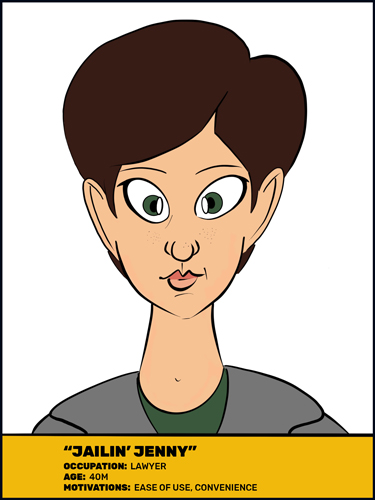 Developing personas works well because it gives you the ideal customer. For example, if you're selling a legal software, and your main client base is lawyers, you'd want to compile as much demographic information about this type of person that you can. Find out what's important to them – for instance, the persona of Jennifer the Lawyer is busy with heavy case loads, so providing a UVP that positions the product as a "time-saver" or "convenient" may serve her needs.
Developing personas works well because it gives you the ideal customer. For example, if you're selling a legal software, and your main client base is lawyers, you'd want to compile as much demographic information about this type of person that you can. Find out what's important to them – for instance, the persona of Jennifer the Lawyer is busy with heavy case loads, so providing a UVP that positions the product as a "time-saver" or "convenient" may serve her needs.
You need to dig deep to understand your target audience and develop personas of your individual audience segments. Conduct user interviews to narrow down your search. You obviously have an inherent audience in mind with the type of product you sell (wheelchairs – elderly audience; kids’ toys – child audience; cologne – male audience). But when you drill down into that inherent audience, what you find may surprise you. Let’s use the previous examples.
Wheelchairs are used by the elderly, but who is most likely buying the product? The younger caretaker.
Kids’ toys are used by children, but who is most likely buying the product? The parents.
Cologne is used by men, but who is most likely buying the product? The significant other of the man.
While yes this is a generalization, it’s true that you will not – and cannot – know who to market to without drilling down and conducting audience research. And if you don’t know who to market the product to, you can’t begin to understand what words and phrases will motivate them to make a purchase.
22. Avoid Duplicate Content
Duplicate content is content that appears on the Internet in more than one place. To provide the best search experience, search engines will rarely show multiple duplicate pieces of content and are therefore forced to choose which version is most likely the original—or best. Eliminating duplicate content issues will prevent your site from being penalized. In order to determine what content on your website is duplicate use the following resources:
23. Avoid Thin Content
To search engines, content with thin or low word count is associated with poor quality. To demonstrate the value of your website’s content, we recommend providing sufficient content on your web pages.
Thin content is perhaps the greatest hindrance a website’s visibility in organic search results. Not only does it limit keyword targeting, but also internal linking opportunities.
If your pages don’t contain more than 250 words of body copy, you’re going to get docked by Google and your pages won’t rank as high. For reference, SerpIQ analyzed the content length of top 10 results and found that depth is rewarded at around 2,250 words.
Granted, this takes into account extremely content-heavy resources, like Wikipedia, but it illustrates that greater depth is needed for web pages to achieve and maintain high rankings.
For any page that you wish to rank favorably for relevant search terms, you should shoot for a body copy word count of 750 to 2500+ words. It could be very likely that this copy already exists in printed media, like brochures or information packets, it simply needs to be reflected online.
24. Building a Creative Brief
A creative brief is a high-level overview of the necessities and desires of a project. It’s created by the account manager or the person closest to the brand and then distributed among the creatives – writers, designers, developers, strategists – in order for them to have a cohesive grasp on the project requirements. If you haven’t developed a creative brief, here’s one you can employ at your marketing agency:
The Background
Brief Version 1 | Project Number XXX
Client: Website:
Kick-off: XX/XX/XX
Project: Content updates, SEO services, Social Media updates Budget: $$$
Client Point of Contact:Phone/Email: XXX.XXX.XXXX
Acct Mgr:
Copy:
Technical SEO:
Design (Devs, etc.):WordPress Admin Information:
Username:
Password:
Due Date: XX/XX/XX
The Situation
Brand Promise … What does the brand promise to its customers? Usually found in the mission statement. Keeps us focused on connecting our ideas back to the brand.
Brand Personality … How does the brand want to portray itself? Keeps us in character with the ideas we formulate
Business Opportunity … What’s the problem this company solves? Frame it as an opportunity.
Stand out idea … What is a singular thought that brings meaning and inspiration to this brand? Have fun with this, but consider the preceding information.
The Execution
What’s the ask?
What does our client want us to do for them, what services do they expect us to do and how do they want them done?
Objective
What is our objective for this client?
Insights
How is our client performing? List any numbers, facts or figures that make them look good.
Audience
Beyond demographics and marketing speak, who are the people we’re trying to reach? what is their current relationship with their perceived target? What professions might they take on?
Brand Mandatories
What information can our client give us that is absolutely necessary for the consumer to understand when buying a product or service from said client.
Considerations / Perceptions
Any barriers in place that discourage consumers from purchasing client’s product/service? Any brand, product or service benefits should be listed.
KPIs
How will we know that we’ve been successful? What does the client need to show success internally?
25. Have Fun!
Your content assets should never be boring – even in a boring industry! Sometimes, those industries that are seemingly “dry” (i.e. financial company websites, manufacturing, B2B or niche markets) can have some of the best content opportunities. No content is boring if it is educational, valuable and helpful to those people who show true interest in the topic. No content is boring to those whose questions it answers. No content is boring to those who need additional helpful resources. No content is boring if it appeals to your target audience. People search for and consume content to further their education and entertain themselves – the only limit is your creativity.
To kickstart your creativity, check out our post: 23 Awesome Resources for Web Design Inspiration.
Bonus Copywriting Tips
26. How Can I Practice Copywriting? Exercises To Try
Like any skill, becoming an expert copywriter takes practice. There are several things you can do to practice your copywriting:
- Read as many copywriting books as you can. The art of copywriting has been refined over the centuries and there are countless books out there from old and new masters alike to learn from. From text books to novels and beyond, you'll learn key lessons, such as the best brainstorming techniques, top advertising formulas and how to write headlines, among other things.
- Seek out examples, and see how you can re-imagine them. Whether you love old Volkswagen magazine advertisements or get inspiration from the latest Instagram influencer's social media posts, you can't keep up with an industry without immersing yourself in it.
- Mindful writing or mindless writing? In any creative profession, you need to be keen on how cerebral your approach is to each and every writing assignment. Sometimes, it can be beneficial to put all of your thoughts aside and simply let the words flow freely from your mind to the paper. This is a process called mind mapping and is a great way to uncover hidden messages and meanings behind a brand, product or service — take a look at an example below.
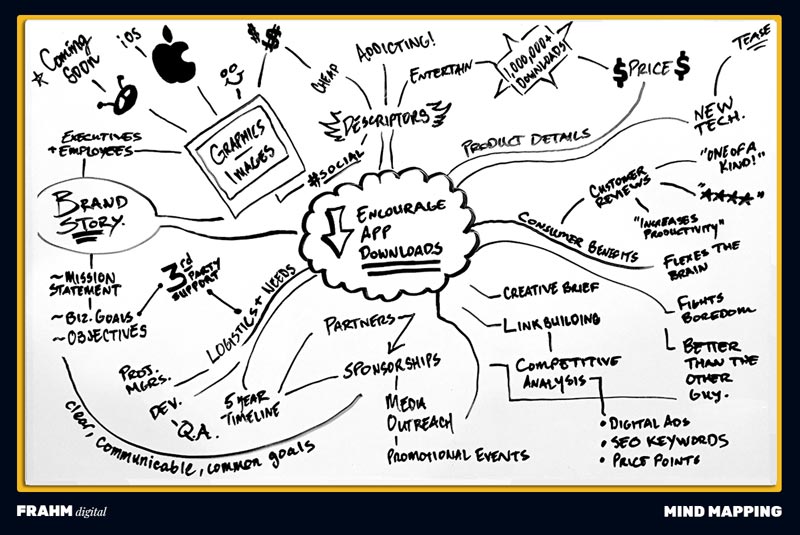
- Repurpose content that's already created. A good way to get more mileage with content that's already created is to repurpose it. Do you have a high-performing content hub? Split it up into listicles, a video run-down, infographics, etcetera, etcetera. While you won't want to get dinged for duplicate content, it should be easier to "re-write" the copy that is already on paper.
- Join forums and social media groups for feedback. Many social media platforms, like Reddit, Facebook and Instagram have pages and groups where writers can receive feedback for their work. Additionally there are tons of forums out there where the copywriting community gathers to discuss hot topics, get critiqued and find/post freelance jobs. Some of the more popular ones include Copy Chief, Warrior Forum and Copywriters Forum.
- Try out other styles of writing. Copywriters are used to heavy work loads, but sometimes, it can be too much. Don't get stuck in a rut. Keep a personal diary where you can keep track of short stories, non-fiction tales and other ideas. You could even give some other type of creative endeavor a shot – pottery, painting or crocheting, for example.
Are you searching for the best copywriting team available?
Whatever you need help with—we're here. From award-winning websites to creative copywriting to stellar SEO and beyond, we can help you understand what it takes to succeed online. Click the button below to get a no-hassle website audit. We'll give you a list of things that you can do to improve your website, right now, no strings attached.

